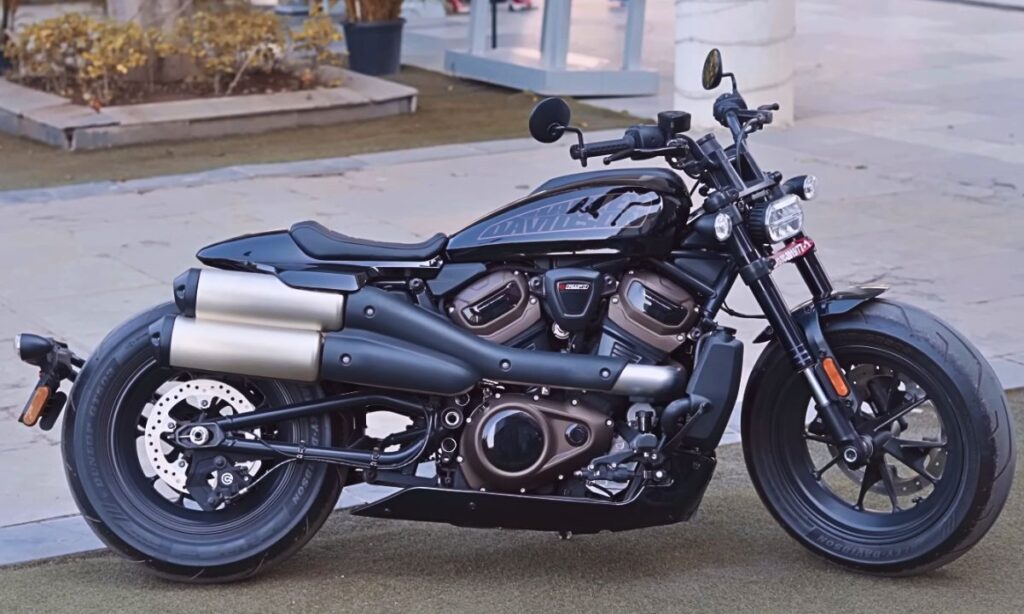Harley Davidson motorcycles have always been synonymous with performance, style, and attitude. A pivotal aspect of their superior performance and rider comfort is their air suspension system.
Having the right air suspension can make a complete difference in ride comfort and riding style.
In this article, we will explore the Harley Davidson Air Suspension Chart with detailed insights into the air suspension specifications of various models.
Why Do You Need a Harley Davidson Air Suspension Chart?

The Harley Davidson Air Suspension Chart is a crucial tool for any Harley Davidson enthusiast.
The chart allows you to gain a better understanding of your motorcycle’s suspension system, providing information on the ideal air pressure levels for different riding conditions.
The chart is often specific to each model, reflecting the unique suspension configurations.
It allows you to adjust your suspension based on the load weight (including passenger and cargo) and the type of riding you plan to do.
Whether it’s cruising on highways, tackling twisty back roads, or riding with a passenger.
It’s important to remember that the right suspension setup can dramatically impact the bike’s handling and rider comfort.
Therefore, using the Harley Davidson Air Suspension Chart can help ensure a smoother, more controlled ride, improving overall ride safety.
Harley Davidson Air Suspension Chart
Here is the air suspension chart for the Halrey Davison:
Chart for the Harley-Davidson with Standard Shocks:
| Shock Load | Total Weight | Pressure (PSI) | Pressure (kPa) |
| Rider with passenger | More than 200 lbs (over 91 kg) | 20-25 | 138-172 |
| Maximum GVWR | 20-35 | 138-241 | |
| Solo Rider | Around 150 lbs (68 kg) Average Rider | 0 | 0 |
| Rider with passenger | Around 150 lbs (0-68 kg) | 15-Oct | 69-103 |
| Solo Rider | 150-200 lbs (68-91 kg) | 0-10 | 0-69 |
| Solo Rider | 200-250 lbs (91-113 kg) | 10-May | 35-103 |
Chart for the Harley-Davidson FLHRS with Low-Profile Shocks
| Shock Load | Total Weight | Pressure (PSI) | Pressure (kPa) |
| Solo Rider | Around 160 lbs. (0-73 kg) | 0-5 | 0-35 |
| Rider with passenger | More than 150 lbs (over 68 kg) | 25-35 | 172-241 |
| Maximum GVWR | 40-50 | 276-345 | |
| Rider with passenger | Around 150 lbs (0-68 kg) | 20-30 | 138-207 |
| Solo Rider | 160-200 lbs (73-91 kg) | 0-10 | 0-69 |
| Solo Rider | More than 200 lbs (91 kg) | 10-May | 35-69 |
Why Is It Important To Adjusting Air Suspension On Harley Davidson?
Adjusting the air suspension on a Harley Davidson motorcycle is crucial for several reasons.
Firstly, it optimizes the ride quality and comfort based on the rider’s weight and the terrain.
It also influences the overall motorcycle handling, as a well-adjusted suspension allows for better road grip and improved braking efficiency.
Different models of Harley Davidson may feature different kinds of air suspension systems, including the conventional twin shocks or the mono-shock suspension system.
1. Easy Loading
Adjusting the air suspension on your Harley Davidson not only enhances comfort and handling but also makes for easy loading.
With the right suspension setup, the process of mounting and dismounting your bike becomes effortless.
It facilitates the loading of additional cargo on the bike’s luggage system, a feature particularly beneficial for long-distance travelers.
The lowered height achieved through air suspension adjustment provides a more stable foundation when parked or during slow-speed maneuvers.
2. Steady Riding
The air suspension system impacts the motorcycle’s overall performance, including handling and ride comfort.
When adjusted correctly, the air suspension stabilizes the bike, ensuring a smoother ride and better handling, particularly under varying weight loads or road conditions.
This plays an important role in maintaining the bike’s balance and the rider’s comfort during long journeys, contributing to a steady and enjoyable riding experience.
3. Customized Rides
Harley Davidson motorcycles, renowned for their high-performance capabilities, feature advanced air suspension systems.
Adjusting these suspensions can significantly impact the handling, comfort, and overall ride quality.
Whether you’re cruising along a smooth highway, navigating rough, off-road trails, or maneuvering through city traffic, a well-adjusted air suspension can ensure optimal control, stability, and responsiveness.
4. Risking Bottom-Outs
One of the most significant risks linked to improper air suspension adjustment on a Harley Davidson is bottoming out.
This term refers to when the motorcycle’s suspension is compressed to the maximum extent due to a heavy load or hard impact, causing the undercarriage to contact the ground.
Bottoming out can lead to serious damage to the motorcycle’s frame and other components and potentially dangerous situations on the road.
Moreover, it can lead to harsh rides and can compromise the handling ability of the motorcycle.
How Do I Adjust Air Suspension On My Harley Davidson?
Adjusting the air suspension on your Harley Davidson is a straightforward process that can have a significant impact on ride comfort and handling.
Here are the steps to adjust the air suspension:
1. Locate Air Valve
The air valve for the rear suspension system is located on the left side of the bike, just above the rear wheel. It may be covered by a cap that you’ll need to remove.
2. Check Pressure
Using a hand-operated air pump, check the current pressure in the suspension system.
Harley Davidson recommends a pressure of between 0 to 50 psi, depending on the weight being carried.
3. Adjust The Pressure
To increase the pressure, connect the pump to the air valve and pump air into the system.
To decrease the pressure, briefly press the center of the air valve to release air. Always adjust the pressure in small increments and recheck after each change.
4. Test ride
After adjusting the pressure, take a short test ride to see how the changes affect the ride. If necessary, repeat the adjustment process until you’re satisfied with the ride’s comfort and handling.
How Much Air Do You Put In Harley Davidson Air Shocks?
Harley Davidson air shocks typically require an air pressure ranging between 20-50 psi, depending on the load of the bike and the desired ride quality.
However, it’s crucial to consult the owner’s manual or the manufacturer’s recommendation for your specific model to ensure the correct air pressure.
Over-filling or under-filling can result in subpar performance or potential damage to the air shocks. Always use a hand pump instead of a high-pressure hose to avoid over-inflation.
What Is The Pressure Range For Air Suspension?
Air suspension systems typically operate within a pressure range of 5 psi to 150 psi.
A variety of vehicle weights and ride preferences enable optimal performance across diverse driving conditions.
It’s crucial to abide by this pressure range, as pressures below the minimum can impair ride quality and vehicle handling while exceeding the maximum can risk damage to the air suspension components.

Tonmoy, the brains behind the influential motorcycle-focused website, TwoWheller.com, is a dedicated and passionate advocate for biking culture. Born and raised in a family of motorcycle enthusiasts, his love for two-wheeled transportation was ignited at an early age. His commitment to providing in-depth reviews and helpful tips for riders has established him as a respected figure in the motorcycle community.
